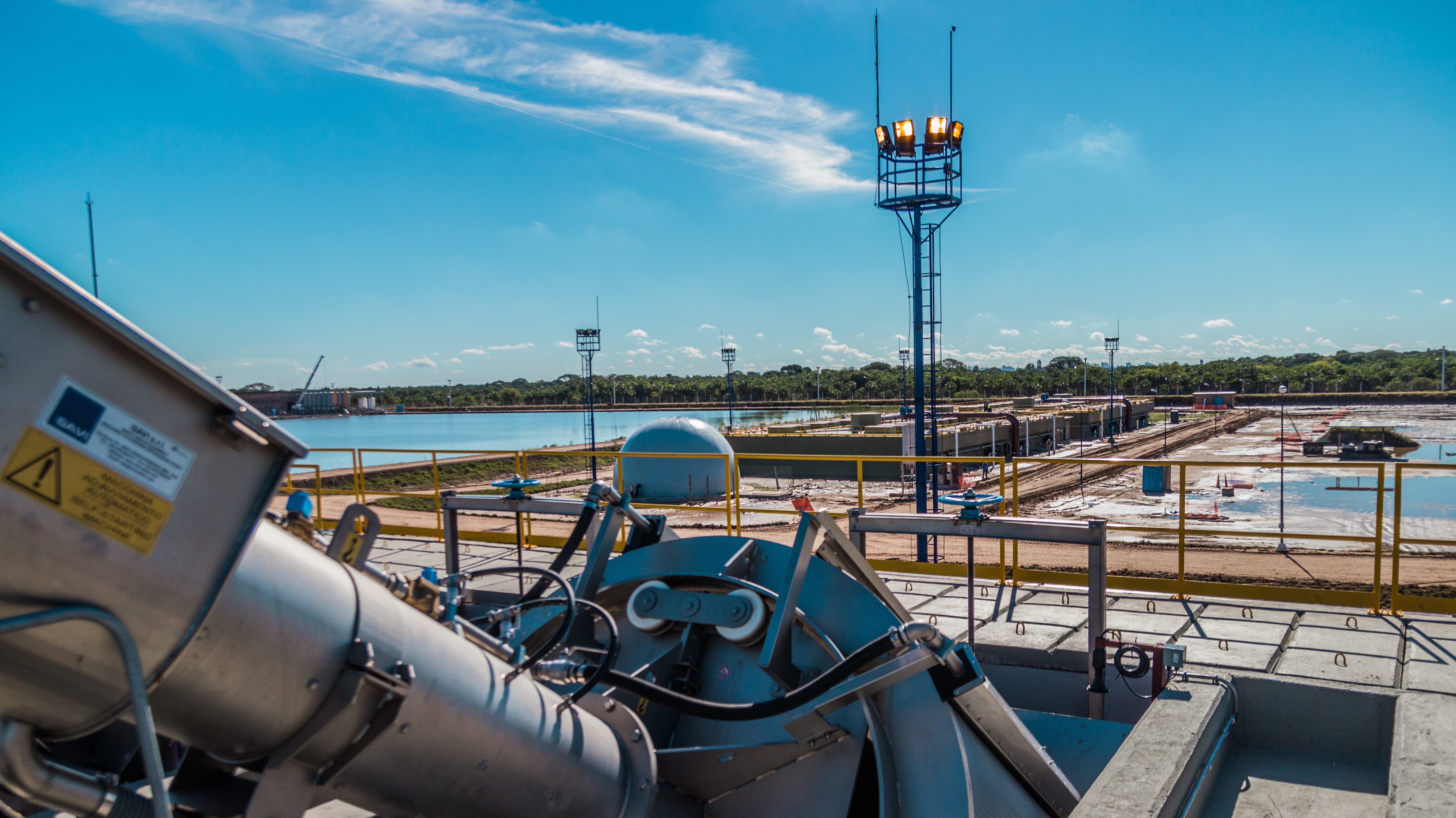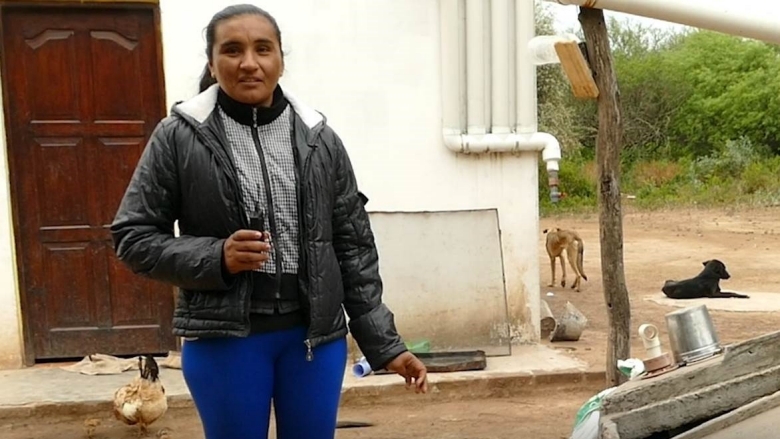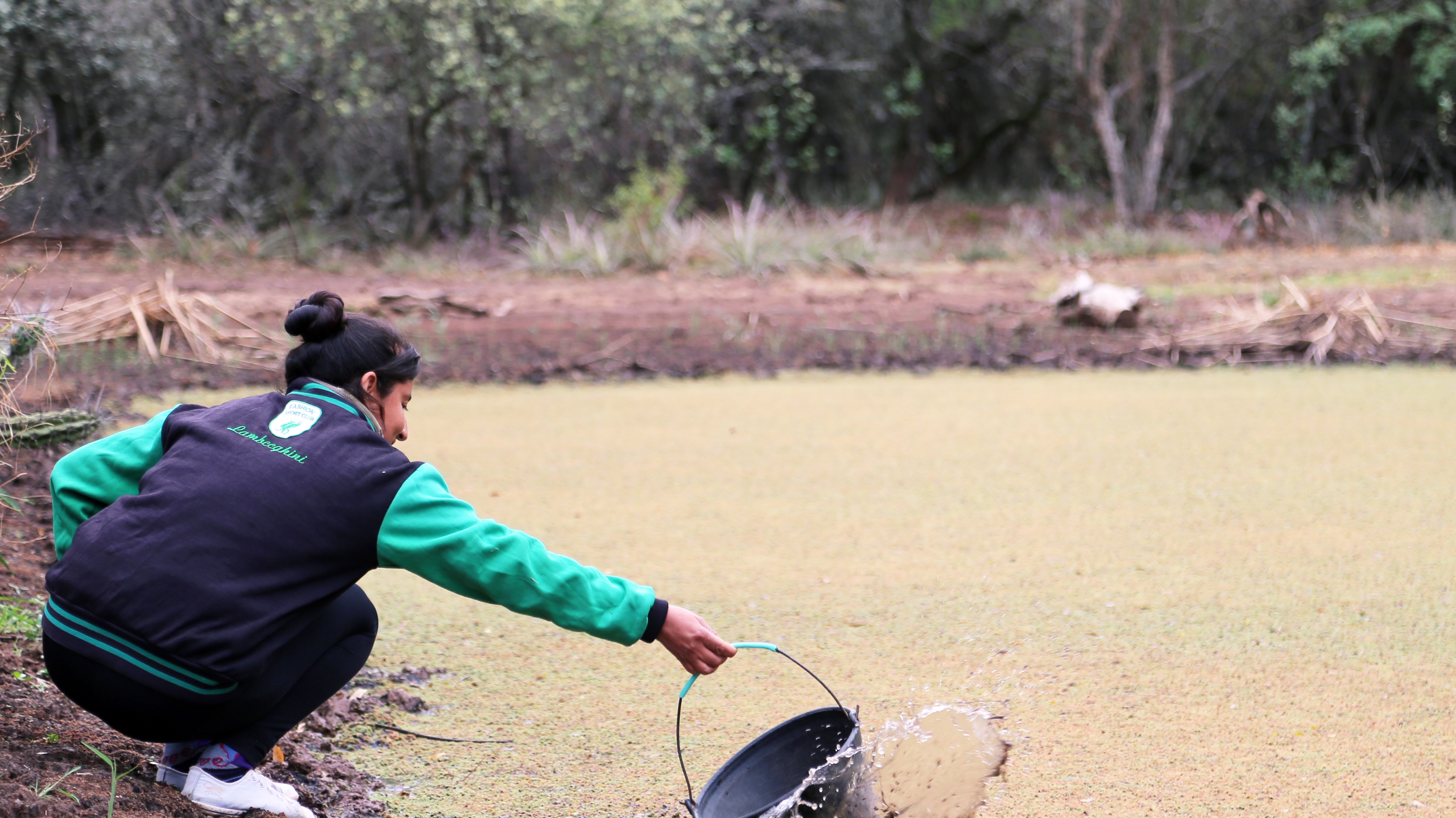Challenge
Water supply in rural areas of Chaco province was limited in coverage and unreliable. Settlements could count on service for only a few hours per day or were served by water trucks. Some scattered communities relied on unsafe, stagnant surface water. Clean surface water was only available from the Bermejo River, which often changes its pattern. Groundwater was not an option due to the natural appearance of arsenic. Many scattered communities lacked adequate means for rainwater harvesting and storage. During the long, severe dry periods, harvesting water was impossible, and women and children had to expend more time and effort to find water.
Adding to the complexity, the region’s remoteness (it is described as impenetrable, “impregnable”) made it impossible to reach during rainy season; its communities (both Indigenous and criollo) were among the most impoverished in the country; and inhabitants are members of different Indigenous groups (Qom and Wichi), each with their own traditions.
Approach
The Norte Grande Water Infrastructure Project focused on expanding sustainable water service coverage through both infrastructure and institutional strengthening. More specifically, the project financed
- the rehabilitation, upgrade, and reconstruction of the water supply and urban drainage system;
- institutional and/or operational strengthening programs for participating water and sanitation service providers;
- technical assistance to service providers and regional entities responsible for water and sanitation and urban drainage services; and
- institutional strengthening activities to promote water supply and sanitation sector knowledge and capacity building within relevant sector institutions.
The project had a strong poverty orientation, with emphasis on reaching the last mile and used a participatory approach and an extensive consultative process to create space for Indigenous communities and scattered rural populations to raise any concerns. The project’s technical design took these groups’ concerns and feedback into consideration in developing specific plans to address them. The Bank´s presence was key to avoiding changes in priorities due to administration change.
Results
The Norte Grande Water Infrastructure Project has helped Argentina to increase access to water supply and drainage services, to improve service quality, and to bring sustainability into the sector. The following are the key project outcomes reached between 2011 and 2019:
Two water supply systems were built, benefiting 50,500 people in urban areas who now receive improved water sources.
Scattered Indigenous and criollo communities, together numbering 9,100 residents, benefited from public water standpoints.
A total of 735 water harvesting systems were built in rural remote areas, benefiting 3,600 people.
Approximately 750 hectares in urban areas were protected from flooding through drainage networks, benefiting 40,000 people.
Three provincial water providers improved financial and performance indicators, including increases in the collection ratio (in one case showing a remarkable 34 % increase), decreases in nonrevenue water, and overall increases in micro-metering.
Roadmaps for improvements were formulated and adopted by three water operators.
Social and Environmental Units were established within three water operators.
Time required to fetch water decreased by about 30 minutes for Wichi and criollo women in the impenetrable.
Through the Indigenous Peoples Plans adopted by the Presidencia Roca, Pampa del Indio, and five other municipalities, the project built three community centers as part of the Ruta de la Cultura Qom initiative. These centers focus on strengthening women’s groups in pursuing handcraft production, cooperative association, and tourism.

Wichi water system
Bank Group Contribution
The World Bank, through the International Bank for Reconstruction and Development (IBRD), financed this project with a loan of US$200 million. IBRD support in the sector has traditionally had an urban focus, and this was one of the first IBRD-financed rural water supply projects in Argentina.
The IBRD continues to finance water supply and sanitation projects in Argentina, including the Plan Belgrano Water and Sanitation Services Development Project (US$200 million), which complements this project’s efforts by financing extension of the water distribution networks of the Wichi aqueducts to Fuerte Esperanza and El Sauzal.
Partners
The Norte Grande, later modified as Plan Belgrano Program, is a country-led effort to reduce the infrastructure imbalances in Argentina, including water, drainage, transport, and energy. It is supported by other multilateral development banks, including the Inter-American Development Bank (US$1,550 million) and the Development Bank of Latin America (US$240 million). Through the strong partnership forged with these donors, coordination efforts are being made to ensure all activities reach their full potential.
Beneficiaries
Mariana Coria has benefited from the water harvesting system instituted as part of the Wichi water system. She says, “When there was not water, we had to go to the river. We carried water in pots and buckets, and we brought back the water. I went to a pond and stagnant water has a lot of bugs. Now we have a tank and the gutters, only for rainwater, a clean and fresh water, very pretty. It lasts a lot, because is only for human consumption.”

Mariana Corenzosa beneficiary of rainwater harvesting infrastructure in the Impenetrable. Photo Credit: World Bank
Moving Forward
The Plan Belgrano Program continues moving forward with several infrastructure investments. Although the sustainability of provincial water operators remains a challenge, the water operators in northern Argentina continue to implement their roadmaps for improvements. Furthermore, the Social and Environmental Units established within the water operators are committed to addressing the concerns of rural and Indigenous groups. Other multilateral banks and donors are using the same tools in their current funded projects.
